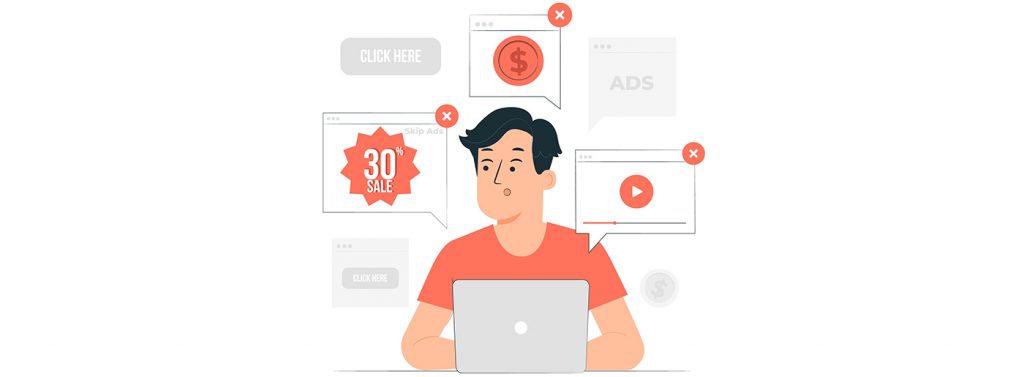Geo-Targeting and Local PPC: Location-Specific Campaigns for Targeted Reach
Geo-targeting in PPC isn’t a nice-to-have; it’s essential. It lets you show ads to people in specific locations. That means you waste less money and get more clicks from people who actually matter to your business. The goal of this article is simple: show you how to set up and run a location-specific PPC campaign. Our marketing agency will cover the how-to, the pitfalls, and the best practices.
What is Geo-Targeting?

Geo-targeting in PPC is about control. You decide the geographic areas where your ads show up. This can be as broad as a country or as specific as a zip code.
Why use geo-targeting? First, it saves money. You’re not spending on clicks from people outside your service area.
Second, it boosts relevance. Ads tailored to local events or needs get more clicks.
Third, it’s about competition. In crowded markets, local targeting can give you an edge. You’re not just another ad; you’re the local option.
Why Local PPC Matters

Local PPC campaigns offer distinct advantages that can significantly impact the effectiveness of your Google and Facebook ads management. Here’s a deeper look into why focusing locally can be a game-changer:
Cost-Efficiency
The first major advantage is cost-efficiency. When you target ads to specific geographic locations, you’re not throwing your budget into the wind and hoping for the best.
A HawkSEM case study demonstrated this with a brand that saw a 562% year-over-year increase in SEM revenue. This kind of precision in ad placement ensures that you’re reaching potential customers who are actually within your service area, making every ad dollar count.
Relevance
The second advantage is relevance. Local PPC ads can be highly customized to fit the local context. Whether it’s a local event, a holiday, or even specific weather conditions, these ads resonate more with the audience.
This heightened relevance not only increases the likelihood of clicks but also can lead to higher conversion rates. It’s not just about the ad message; it’s about how that message fits into the viewer’s life at that moment.
One effective strategy not to overlook in local PPC campaigns is PPC remarketing, enabling businesses to reach individuals who have previously interacted with their website or ads but didn’t convert. Employing this tactic can lead to increased conversion rates by targeting users with personalized ads based on their prior online behaviors.
Competition
Lastly, let’s talk about competition. In a digital landscape where everyone is fighting for attention, local PPC allows you to be the immediate, local option for the consumer.
This localized focus gives you a competitive edge, making you the go-to option in a specific geographic area. In crowded markets, this can be the difference between being scrolled past and being clicked on.
Setting Up Geo-Targeting in PPC Platforms 
Setting up geo-targeting in PPC platforms like Google Ads is a straightforward process.
Google Ads
- Log In and Select Campaign: Log into your Google Ads account and navigate to the campaign you want to apply geo-targeting to.
- Go to Settings: In the left sidebar, click on “Settings.”
- Choose Locations: Scroll down to the “Locations” section. Click on the blue pencil icon to edit.
- Enter Locations: You can now enter the locations you want to target. This could be countries, cities, or even specific zip codes.
- Advanced Options: For more granular control, click on “Advanced Search” where you can set radius targeting around a specific location.
- Save and Review: Once you’ve entered all your locations, click “Save.” Make sure to review your settings to confirm they’re as you intended.
- Monitor and Adjust: After your campaign has run for some time, go back to the “Locations” section to see performance data. Adjust your settings as needed for better results.
Additional Tips
- Exclusions: Don’t forget you can also exclude locations where you don’t want your ads to appear.
- Bid Adjustments: Consider setting bid adjustments for locations that are performing well to maximize ROI.
Facebook Ads
- Access Ad Set Level: Log into Facebook Ads Manager and go to the Ad Set level of your desired campaign.
- Location Settings: Find the “Locations” field under the “Audience” section. Target by country, state, city, postal code, or radius.
- Detailed Targeting: Use “Detailed Targeting” to refine your audience based on behaviors, interests, and demographics.
- Exclusion Zones: Utilize the ‘Exclude’ option in the “Locations” field to omit specific areas.
- Save and Review: Click “Publish” to save your settings. Double-check to ensure they meet your campaign objectives.
- Performance Metrics: Monitor campaign data at the Ad Set level and adjust geo-targeting settings based on performance.
- Additional Features: Use “Location Types” to target people based on recent or home location data.
By following these steps, you can set up geo-targeting for your PPC campaigns and make your ads more relevant and effective.
Best Practices for Geo-Targeting
Geo-targeting can be a powerful tool in your PPC arsenal, but it needs to be used wisely. Here are some best practices to ensure you’re getting the most out of your location-specific campaigns.
Budget Allocation
Prioritize High-Performing Areas: Allocate more budget to locations that have shown good performance in terms of clicks and conversions.
Test and Scale: Start with a smaller budget for new locations. If they perform well, gradually increase the budget.
Keyword Selection
Local Keywords: Incorporate local terms or landmarks in your keywords. For example, “best pizza in Brooklyn” instead of just “best pizza.”
Negative Keywords: Use negative keywords to exclude irrelevant local searches that could waste your budget.
Ad Copy
Localize Language: Use local slang or terminology to resonate more with the local audience.
Call-to-Action (CTA): Make your CTA location-specific. For example, “Visit our Manhattan store today!”
Additional Tips
Seasonal Adjustments: Some locations may have seasonal trends. Adjust your keywords and budget accordingly.
Competitor Analysis: Keep an eye on what local competitors are doing and adjust your strategy to stay ahead.
By following these best practices, you can optimize your geo-targeting efforts for better performance and higher ROI.
Common Pitfalls and How to Avoid Them 
Geo-targeting can be highly effective, but it’s easy to make mistakes that can derail your campaign. Here are some common pitfalls and how to avoid them:
Over-Targeting
Mistake: Setting your geo-targeting too narrowly, missing out on potential customers.
Solution: Start broad and narrow down based on performance data. Don’t exclude potential high-performing areas prematurely.
Under-Targeting
Mistake: Targeting too broadly, leading to wasted ad spend.
Solution: Use data to identify low-performing areas and either reduce budget or exclude them.
Ignoring Local Culture
Mistake: Using the same ad copy for different locations without considering local nuances.
Solution: Customize ad copy to resonate with local culture, slang, or needs.
Neglecting Mobile Users
Mistake: Not optimizing for mobile users who are often looking for local solutions.
Solution: Make sure your ads and landing pages are mobile-friendly. Use location extensions for better mobile visibility.
Inadequate Tracking
Mistake: Not tracking performance by location, leading to poor optimization.
Solution: Use platform analytics to monitor performance by location. Adjust strategy based on insights.
Budget Imbalance
Mistake: Allocating the same budget across all targeted locations.
Solution: Prioritize budget based on location performance. High-performing areas should get more budget allocation.
By being aware of these common mistakes and their solutions, you can make your geo-targeting efforts more effective and efficient.
Case Study
InTheMarket, an online retail business, optimized their PPC campaigns to achieve significant ROI. Their focus on the Irish market provides actionable insights for effective local PPC strategies.
The Challenge
InTheMarket aimed to increase ROI through optimized PPC campaigns, targeting the Irish market exclusively.
The Strategy
UAWC leveraged Google and Facebook Ads, employing Performance Max campaigns for real-time optimization across multiple channels.
Local PPC Implications
Geo-Specific ROAS: A ROAS of 5.5+ on Google Ads highlights the effectiveness of geo-targeted campaigns.
- Targeted Purchases: 2,224 purchases through Performance Max campaigns indicate high conversions, likely due to localized targeting.
- Localized Remarketing: A ROAS of 14.82 on Facebook Ads with 547 transactions underscores the value of geo-specific retargeting.
Key Takeaways
- Multi-Channel Synergy: Utilizing multiple platforms can amplify the effectiveness of local PPC campaigns.
- Data-Driven Decisions: High ROAS and conversion numbers emphasize the role of analytics in optimizing local PPC.
- Remarketing: Localized retargeting can significantly boost ROI.
By focusing on these key areas, businesses can aim to achieve similar success in their local PPC campaigns.
Future Trends in Geo-Targeting
As technology evolves, so do the opportunities for more precise and effective geo-targeting. Here are some trends to watch:
AI and Machine Learning
- Predictive Analytics: AI can analyze past behavior to predict future actions, making geo-targeting more precise.
- Dynamic Ads: Machine learning algorithms can automatically adjust ad content based on real-time location data.
Voice Search
- Local Queries: As voice search becomes more popular, optimizing for “near me” queries will be crucial.
- Contextual Understanding: Voice search algorithms are getting better at understanding context, which can be leveraged for local PPC.
Augmented Reality (AR)
- Interactive Ads: augmented reality marketing and VR advertising can make geo-targeted ads more interactive, increasing engagement.
- Virtual Storefronts: Businesses can create AR experiences that only activate in specific locations.
5G Technology
- Faster Data: 5G will enable quicker data transmission, making real-time geo-targeting more effective.
- Low Latency: Reduced lag can make location-based services and ads more responsive.
By staying ahead of these trends, marketers can prepare to make their local PPC campaigns even more effective in the coming years.
Conclusion
Geo-targeting can elevate your PPC campaigns, targeting ads and maximizing ROI. This article has covered its importance, best practices, and future trends.
Start using geo-targeting in your PPC campaigns today. The benefits are too significant to ignore.






Leave a Reply